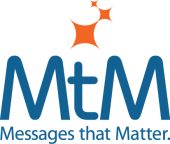If Gartner’s Magic Quadrant for Sales Force Automation (SFA) took into account marketing effectiveness, Microsoft and Oracle would get dinged for lack of differentiation. As you can see in this perceptual map, Oracle and Microsoft have almost identical positions which were determined by evaluating websites of all the companies in Gartner’s SFA Magic Quadrant:

Positioning defined
For clarification, I define positioning as a mental space in your target audience’s mind that you can occupy with an idea that has compelling meaning to the recipient. It’s in this mental space where your solution to the target’s most pressing problem meet and form a meaningful relationship.
Your position becomes the theme for everything you do in marketing. For this assessment, I only evaluated websites, and looked first at home pages to see if any claim is emphasized. Then I checked other pages on the website to determine if the home page claim is executed throughout the site. In most cases, the claim on the home page is never repeated, and repetition is a critical factor in claiming a position and giving it staying power.
Differentiate or target buyers won’t notice you
Lack of differentiation is not just a problem for Microsoft and Oracle. Three companies have similar positions: “accelerate your business” (bpm’online); “accelerate the buying process” (SAP) and “accelerate sales” (Insightly). While everyone wants to speed things up, all these accelerate claims are too similar to be noticed. The same is true for Zoho (close more deals the smarter way) and Pegasystems (sales made smarter).
Why is lack of differentiation a problem? Without clear-cut choice, our brain enters into a state of confusion. The absence of contrast – especially when a prospect has difficulty understanding the differences between your product and others – will bring the prospect’s decision-making ability to a halt.
Buyers notice unique claims
Unique claims attract prospects’ attention and make buyers want to buy because they highlight the difference, gap, or disruption the brain is seeking to justify making a decision.
According to Neuromarketing, we make decisions and “responds favorably to clear, solid contrast. Our brain is hard wired to pay attention to contrast. Sharp contrast helps your prospects’ brain make decisions more quickly and easily, and contrast is often needed to trigger the brain to make a decision.”
It is no surprise that Salesforce is the leader in Gartner’s Magic Quadrant. However, Salesforce has a reputation for being difficult to implement and use. Therefore, many competitors tout fast implementation and ease of use. But no one takes on Salesforce’s vulnerability as directly as PipelineDeals with the position “CRM software you’ll actually use.”
Salesforce goes down market
If you want to know whether these attacks on Salesforces’ usability work, check out the Salesforce home page. Based on the headline, Salesforce might be thinking it has won the enterprise and midmarket CRM battles, and is ready to knock out companies that focus on the small business market:
“Try our out-of-the-box CRM built for small business growth.”
I can imagine what Salesforce competitors in all three markets – enterprise, midmarket and small business – will be saying to prospects in competitive situations. No doubt they will question Salesforce’s ability to deliver a quality product to all three markets, and what affect a focus on small business will have on the original product.
I wonder whether Salesforce can make a profit in the small business market. But maybe that’s not the goal. At $25 per month, a price war might be the plan of attack on small business CRM companies.
